MY CLASSICS
Volvo S40/V40
Cars
| 13-12-2019
To conclude my Daf quadrangle we travel to Born in Limburg one more time, for the cars I reckon to be the last Daf offspring: the Volvo S40 and V40. Apart from their relationship with Daf, I also would have included them in My classics, because in my opinion they're classics in several respects.
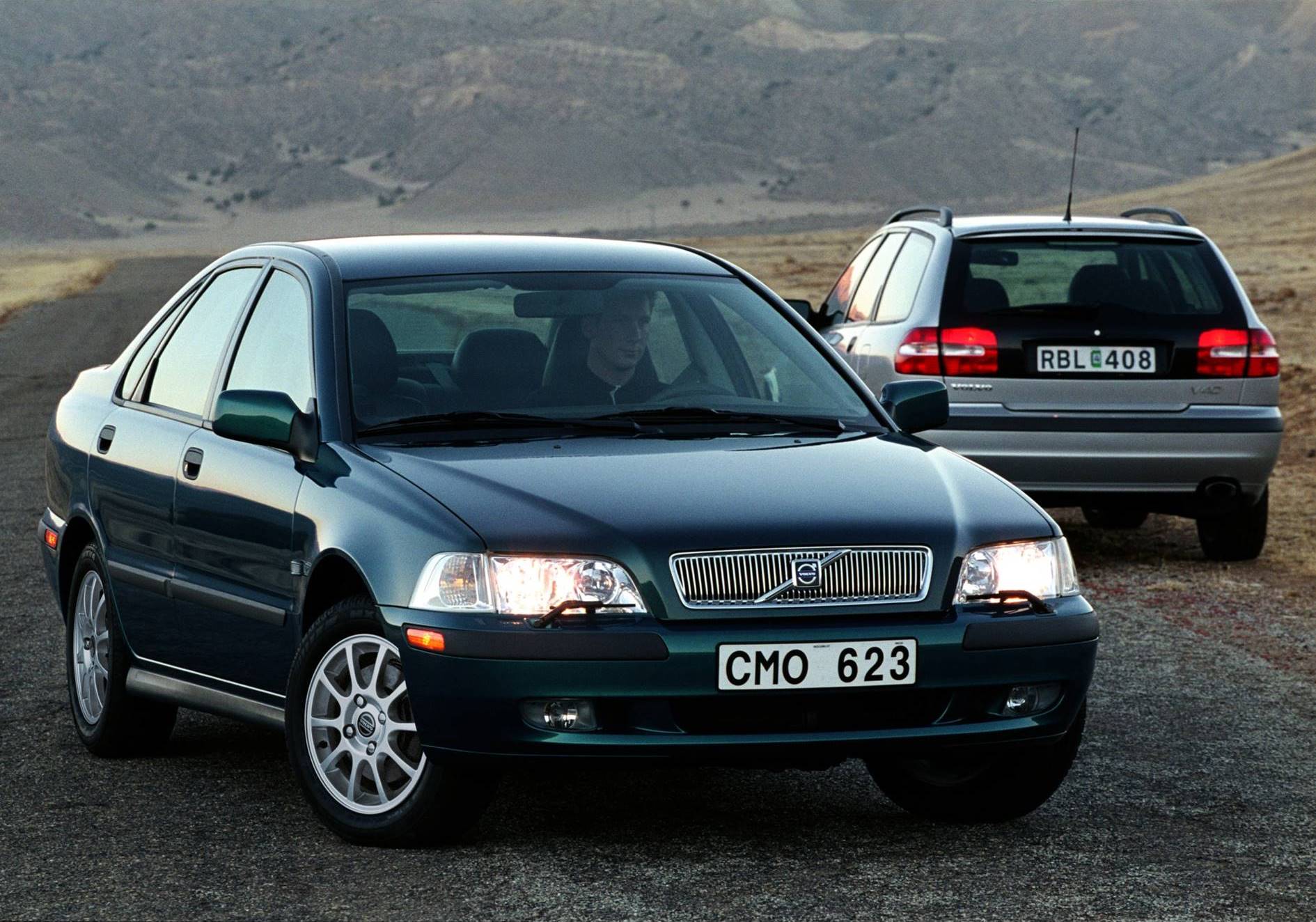
Most of the sources I used for the previous parts about Daf finish their story around the days of the Volvo 340. After all, that is the last model that was originally developed as a Daf. It is also the model that marks the transition from Daf Car to Volvo Car. But the Volvo Car story goes on. The 300 series is joined by the 480, which I will probably discuss in this section sometime in the future. And in 1988, when the millionth Volvo of the 300 series is turned into a work of art by Marte Röling, the production of the 440 starts. That model finally succeeds the 300 series, from 1989 together with its sedan brother 460. At the end of the 1980s, however, it is also clear that Volvo will not be able to build enough cars in Born to keep the factory in bussiness. So the NedCar project arises, in which Volvo looks for a partner. If both parties can build between 90,000 and 100,000 cars each year, the plant is viable. In 1991 a joint venture is established with Mitsubishi Motors Corporation. The Dutch State also has a 33⅓% share. From 1992 the company is no longer called Volvo Car B.V., but Netherlands Car B.V., shortly NedCar. The name of the factory in Born is not the only thing that changes with the establishment of NedCar. The Volvo Car headquarters in Helmond will be closed, and the product development department will be named NedCar Product Design & Engineering. In that department, where the little Daf cars used to be developed, a team led by Fedde Talsma starts working on a new model for Volvo. The team includes Peter van Kuilenburg, who remembers how he made a scale model of a break on his own initiative; although Volvo had not asked for it, they liked the idea, and that is how the V40 came into being.
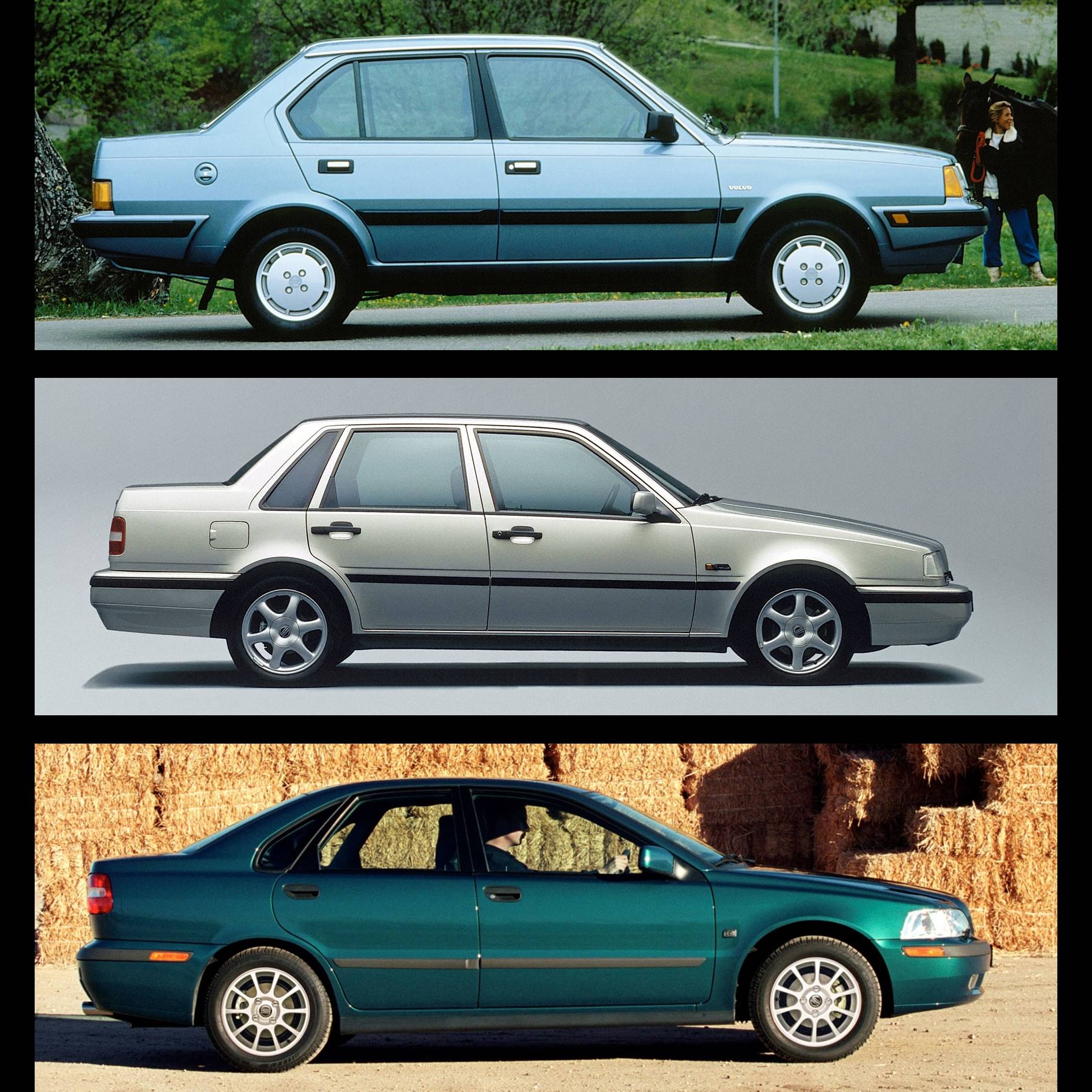
The S40 and V40, which Volvo is developing under the code name 'VX', must be built on the same production line as the models Mitsubishi is working on. Although the cars would be produced together and also share certain parts, they are largely designed separately from each other. Only Volvo is developing its newcomer in the Netherlands. Of course there is close coordination with Mitsubishi. This can be seen, for example, by the outer dimensions and the
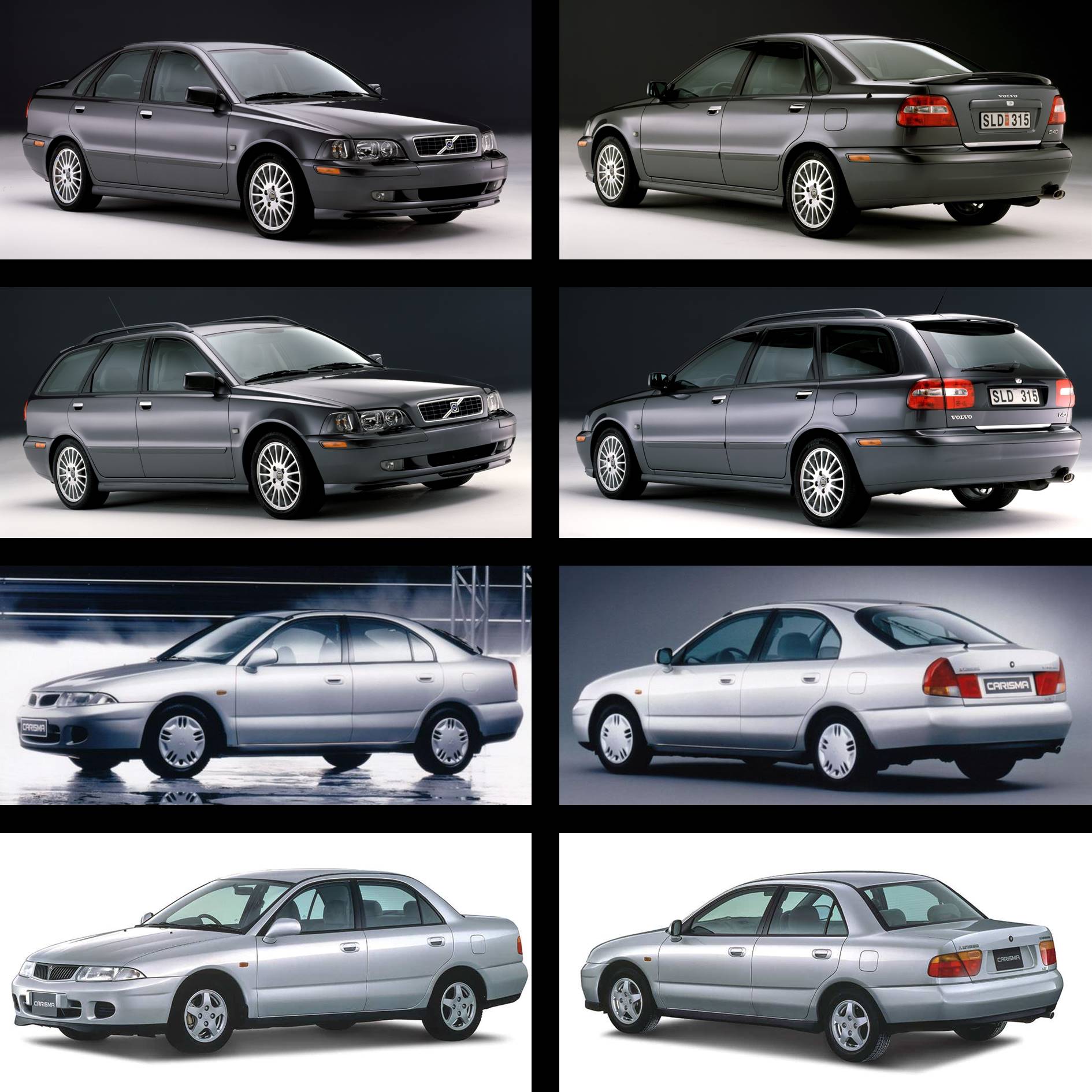
The S40 and V40 are a success. On January 21, 2001, the 500,000th 'VX' rolls off the line, and when production stops in 2004, 776,401 cars (S40: 352,910; V40: 423,491) have been produced. 1999 is the absolute top year for NedCar, with 262,196 cars produced. In that year, however, Volvo is also incorporated into the Ford Motors Company, which means that in 2001 Mitsubishi becomes the full owner of NedCar. That also stops the production of Volvo cars in the Netherlands, which makes the S40/V40 the last direct Daf offspring in my opinion. Although I have always appreciated the S40/V40, I also thought it was a shame that it was a fairly large car. After all, Volvo had taken over Daf to add a somewhat more compact model to their range. Couldn't they have made a hatchback based on the S40 to compete with cars like the Opel/Vauxhall Astra and Volkswagen Golf? Curious as to what such a car could look like, I copied a photo from 'Alle auto's 1996' ('All cars 1996') at one of the local supermarkets, and with some cutting, pasting and drawing I got my answer. Looking at it now, I would give it a slightly thicker
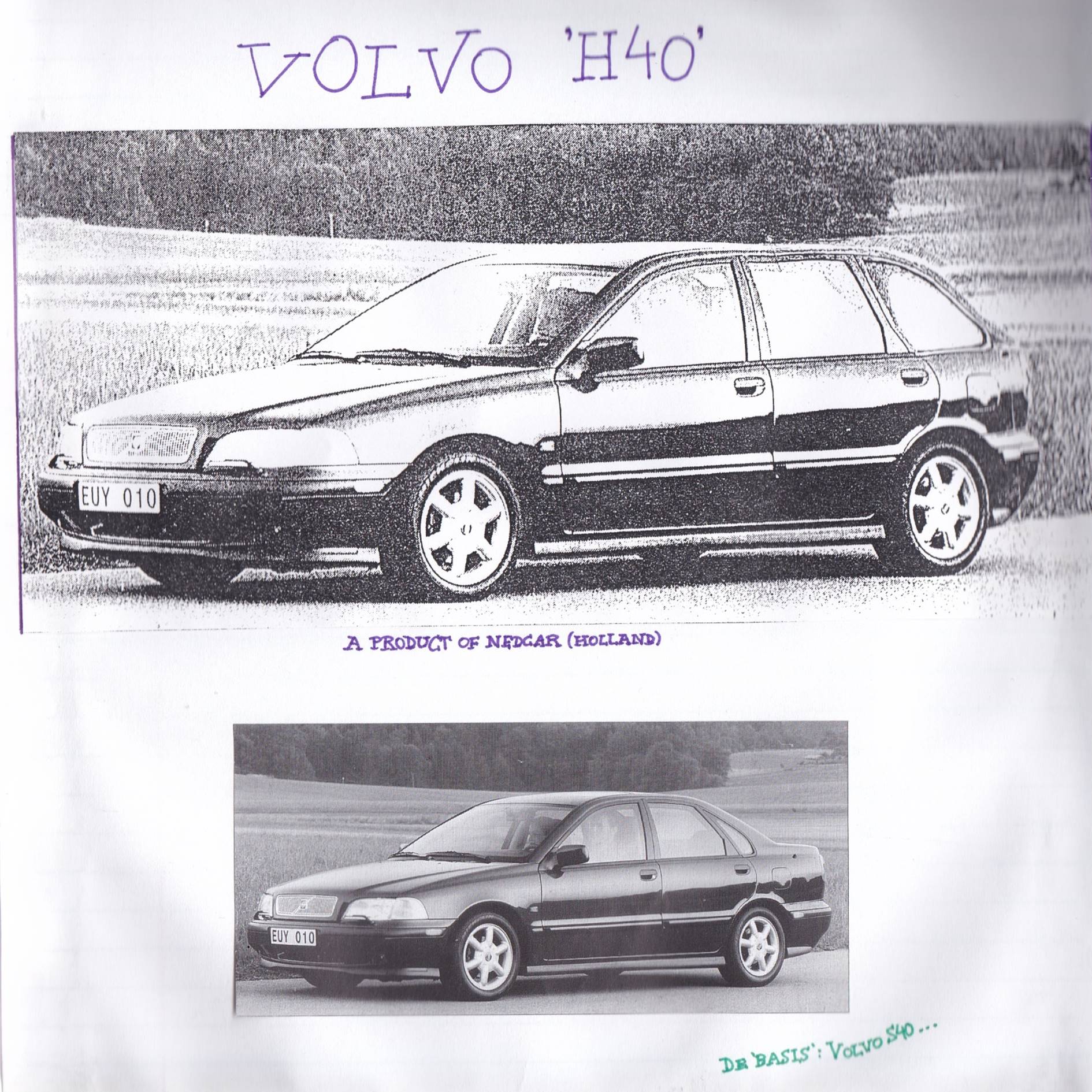
A hatchback of the 'VX' was never made, but the sedan and station wagon sold like hot cakes. Nowadays you still regularly see a 'VX' on the streets, at least in the Netherlands. As far as I can remember, as a passenger, I always thought it was a nice driving car. Moreover, I think it is a strong design. To me the V40 is one of the most successful station wagons ever designed. The S40 always reminds me a bit of the Peugeot 405, although they don't really look alike. Both are fairly inconspicuous medium-sized cars, but with a pleasant appearance and a very harmonious and above all very timeless design. Like Peugeot in the 405 broke with the angular design of its predecessor, Volvo also embarked on a new course with the S40, with a much smoother design than before. Compare the S40 with the 460 on one of the images above and you'll see what I mean. Both the 405 and S40 therefore had a major influence on the design language of the respective brands. Especially at the front, I see some similarity between the S40 and 405. The headlights of both cars are rounded rectangles that look just a bit angry, with just a little above a rounded nod to the slightly rising hood. The cars have a dynamic appearance, without posing sportier than they are. This also applies to the V40, which had a very dynamic appearance for a station wagon, especially at that time. The S40 and V40 still fit in well with other cars on the streets today. At least they don't look like 25-year-old designs to me. Nevertheless they are that old... Real classics!
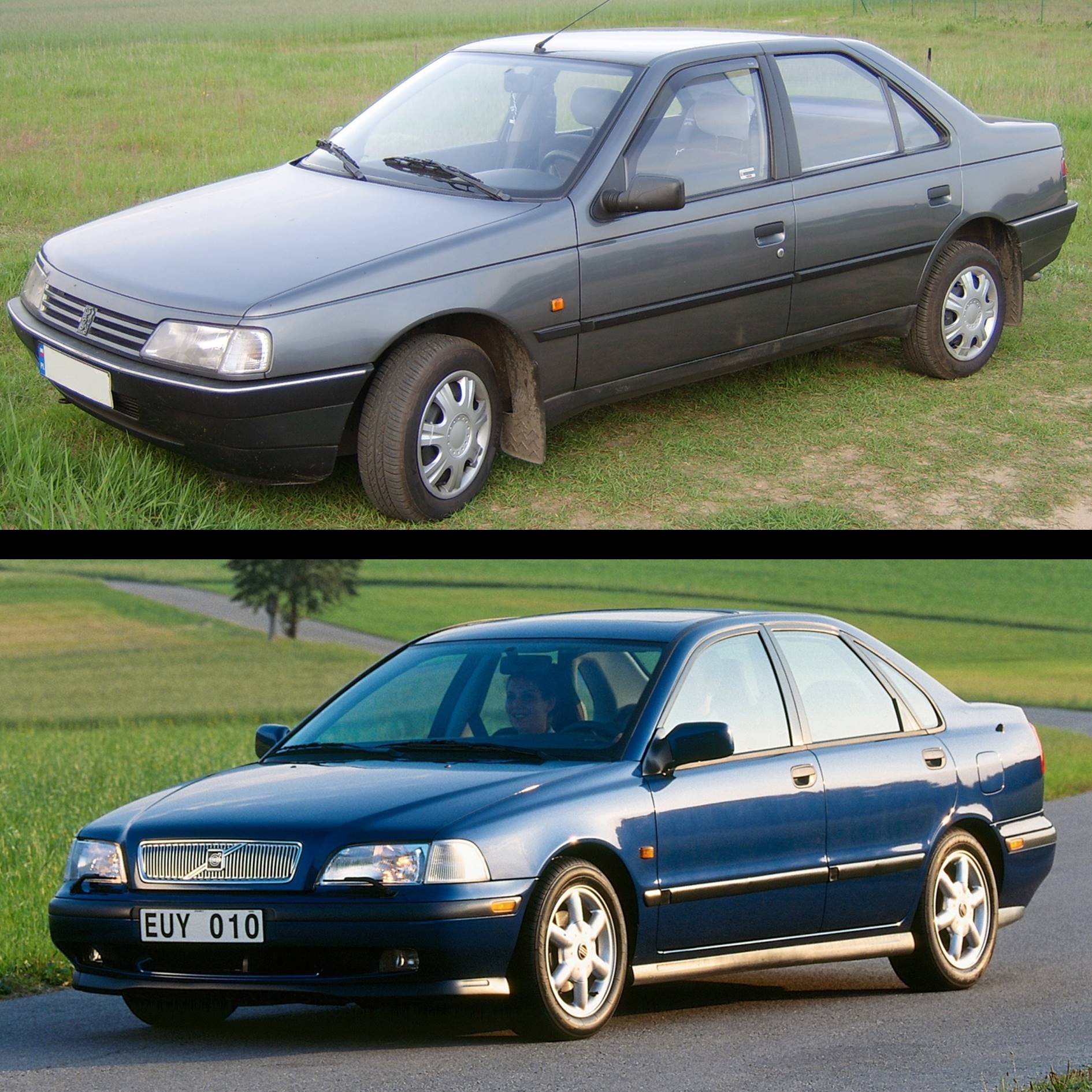

Volvo S40 and V40
Volvo Car becomes NedCarMost of the sources I used for the previous parts about Daf finish their story around the days of the Volvo 340. After all, that is the last model that was originally developed as a Daf. It is also the model that marks the transition from Daf Car to Volvo Car. But the Volvo Car story goes on. The 300 series is joined by the 480, which I will probably discuss in this section sometime in the future. And in 1988, when the millionth Volvo of the 300 series is turned into a work of art by Marte Röling, the production of the 440 starts. That model finally succeeds the 300 series, from 1989 together with its sedan brother 460. At the end of the 1980s, however, it is also clear that Volvo will not be able to build enough cars in Born to keep the factory in bussiness. So the NedCar project arises, in which Volvo looks for a partner. If both parties can build between 90,000 and 100,000 cars each year, the plant is viable. In 1991 a joint venture is established with Mitsubishi Motors Corporation. The Dutch State also has a 33⅓% share. From 1992 the company is no longer called Volvo Car B.V., but Netherlands Car B.V., shortly NedCar. The name of the factory in Born is not the only thing that changes with the establishment of NedCar. The Volvo Car headquarters in Helmond will be closed, and the product development department will be named NedCar Product Design & Engineering. In that department, where the little Daf cars used to be developed, a team led by Fedde Talsma starts working on a new model for Volvo. The team includes Peter van Kuilenburg, who remembers how he made a scale model of a break on his own initiative; although Volvo had not asked for it, they liked the idea, and that is how the V40 came into being.

Dutch sedans by Volvo: 360, 460 and S40
Four models on one production lineThe S40 and V40, which Volvo is developing under the code name 'VX', must be built on the same production line as the models Mitsubishi is working on. Although the cars would be produced together and also share certain parts, they are largely designed separately from each other. Only Volvo is developing its newcomer in the Netherlands. Of course there is close coordination with Mitsubishi. This can be seen, for example, by the outer dimensions and the
wheelbase the distance between the center of the front and rear axle
, which is almost identical for both model series. To make joint production possible, the factory is completely rebuilt. At the end of 1994 - three years after the production cessation of the 340 and 360, and while the production of the 440 and 460 continues - the construction of test series of the new Volvo's and Mitsubishis is started. The Carisma is unveiled in 1995 at the Amsterdam Auto RAI, the show debut of the S40 follows in September at the IAA in Frankfurt am Main, and the V40 sees the public light of day in Bologna in December. A year later the 'new factory' is officially opened with a Grand Opening by Queen Beatrix. On their website VDL NedCar calls the factory in Born "a unique production facility where different car brands and models were built in one production line at the same time." I cannot judge how unique that is, but I like to believe something special was done in Born.

From the same production line: Volvo S40 & V40 and the Mitsubishi Carisma as a liftback and sedan
S40, V40.... H40?The S40 and V40 are a success. On January 21, 2001, the 500,000th 'VX' rolls off the line, and when production stops in 2004, 776,401 cars (S40: 352,910; V40: 423,491) have been produced. 1999 is the absolute top year for NedCar, with 262,196 cars produced. In that year, however, Volvo is also incorporated into the Ford Motors Company, which means that in 2001 Mitsubishi becomes the full owner of NedCar. That also stops the production of Volvo cars in the Netherlands, which makes the S40/V40 the last direct Daf offspring in my opinion. Although I have always appreciated the S40/V40, I also thought it was a shame that it was a fairly large car. After all, Volvo had taken over Daf to add a somewhat more compact model to their range. Couldn't they have made a hatchback based on the S40 to compete with cars like the Opel/Vauxhall Astra and Volkswagen Golf? Curious as to what such a car could look like, I copied a photo from 'Alle auto's 1996' ('All cars 1996') at one of the local supermarkets, and with some cutting, pasting and drawing I got my answer. Looking at it now, I would give it a slightly thicker
C-pillar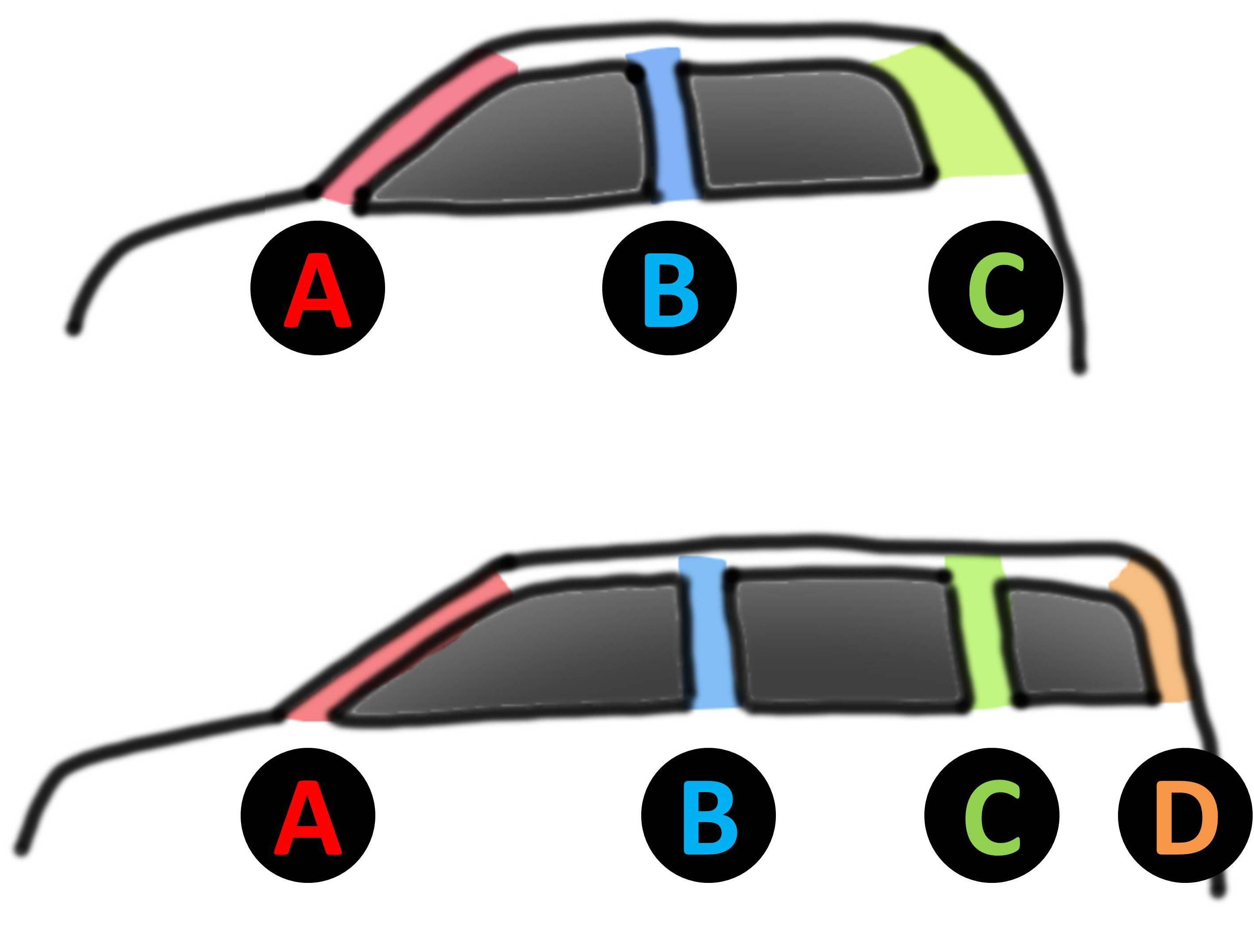
, but otherwise I see a pretty tasty and potentially successful model. However, Volvo would not put something similar on the market until 2012, when they dusted off the name V40 for it. I chose H40 at the end of the 90s, with the H of hatchback, because the station wagon was of course called V40 back then.


My design of a Volvo 'H40'
S40, V40 and 405A hatchback of the 'VX' was never made, but the sedan and station wagon sold like hot cakes. Nowadays you still regularly see a 'VX' on the streets, at least in the Netherlands. As far as I can remember, as a passenger, I always thought it was a nice driving car. Moreover, I think it is a strong design. To me the V40 is one of the most successful station wagons ever designed. The S40 always reminds me a bit of the Peugeot 405, although they don't really look alike. Both are fairly inconspicuous medium-sized cars, but with a pleasant appearance and a very harmonious and above all very timeless design. Like Peugeot in the 405 broke with the angular design of its predecessor, Volvo also embarked on a new course with the S40, with a much smoother design than before. Compare the S40 with the 460 on one of the images above and you'll see what I mean. Both the 405 and S40 therefore had a major influence on the design language of the respective brands. Especially at the front, I see some similarity between the S40 and 405. The headlights of both cars are rounded rectangles that look just a bit angry, with just a little above a rounded nod to the slightly rising hood. The cars have a dynamic appearance, without posing sportier than they are. This also applies to the V40, which had a very dynamic appearance for a station wagon, especially at that time. The S40 and V40 still fit in well with other cars on the streets today. At least they don't look like 25-year-old designs to me. Nevertheless they are that old... Real classics!

Classics: Peugeot 405 and Volvo S40
MY CLASSICS
In the My classics section, I add a model to my digital collection of classics every other week. For that, I select cars whose design appeals to me or evokes memories. So nostalgia, and very subjective. Hence the section title: my classics.
In the next episode: Pininfarina! Or is it?
Sources
- NedCar: 40 jaar autogeschiedenis. (2001). Born/Sittard: Netherlands Car B.V.
- media.volvocars.com
- Lenaerts, B. (2017). Als ik groot ben word ik autodesigner: 17 Nederlanders maakten hun stoutste dromen waar. Antwerpen: WAFT.
- Pictures Volvo: media.volvocars.com
- Pictures Mitsubishi: mitsubishi-motors.nl and autoweek.nl
- Pictures Peugeot: peugeot.nl and fr.wikipedia.org
